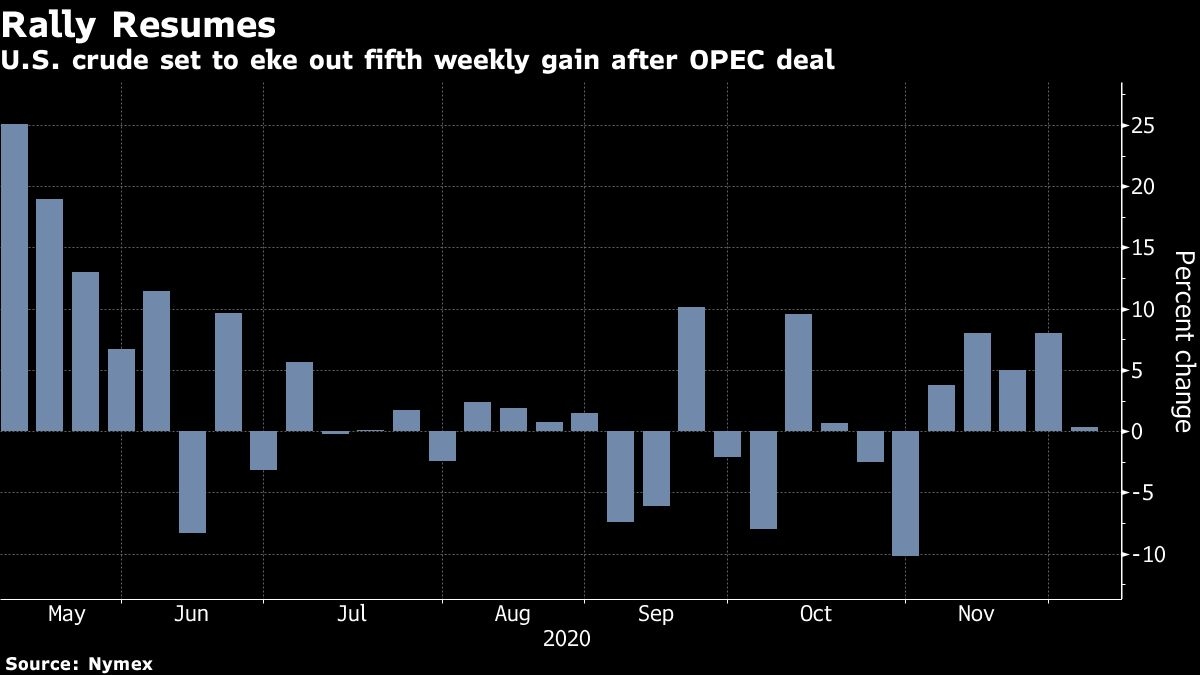Dec 4, 2020
Oil extends gains after OPEC+ clinches compromise deal
, Bloomberg News

Oil extended gains after OPEC+ reached a compromise deal to gradually taper production cuts next year.
Brent futures earlier came within cents of US$50 a barrel, before paring that increase. After five days of talks, OPEC+ agreed to add 500,000 barrels a day of crude to the market in January, with ministers planning monthly meetings to decide on the next steps. The deal avoided a breakdown of unity among the group after a tense split between Saudi Arabia and the United Arab Emirates.
The oil futures curve, meanwhile, is signaling tighter supply as demand in Asia booms and the key North Sea market strengthens. The prompt timespread for Brent crude moved further into backwardation, while the nearest December contract is trading at a higher level than the same contract for December 2022.
The OPEC+ deal offers something to those members concerned about the fragility of the market, and also to nations wanting to pump more to take advantage of higher prices. Oil has rallied recently on optimism that fuel demand will start to rebound once COVID-19 vaccines are widely distributed. At the same time, the return of consumption in Asia continues to outpace the rest of the world, boosting hopes that a glut built up earlier in the year can clear.

“Asian demand is absolutely roofing right now,” Amrita Sen, co-founder of consultant Energy Aspects Ltd., said in a Bloomberg TV interview. “If this momentum continues, we could actually see the oversupply disappear a lot earlier than what we’re expecting.”
Prices
Brent for February settlement climbed 45 cents to US$49.16 a barrel as of 8:57 a.m. New York time, after closing at the highest level since March 5 on Thursday
Futures are up two per cent this week
West Texas Intermediate for January delivery advanced 0.7 per cent to US$45.98
With OPEC+ now set to meet monthly to manage further supply additions, the group will likely become increasingly dependent on price-driven signals like timespreads, Goldman Sachs Group Inc. analysts wrote in a report. The recent rally in the market structure has been driven by financial flows, producer hedging and refinery purchases in Asia, they said.
Analysts broadly welcomed the show of unity from the group. Most said that the modest supply increase will probably keep the market in deficit and Citigroup Inc. revised its price forecasts higher. Still, some think the move to lift output could challenge OPEC+’s ability to keep production reined in.
“There is a real risk that compliance could break down as the quota-challenged countries seek to maximize profits from a market buoyed by vaccine optimism and free-ride on the output adjustments made by others,” RBC analyst Helima Croft wrote in a report.



